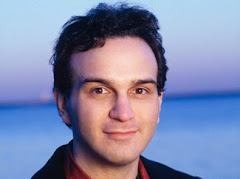Beethoven’s incidental music to King Stephen, Op 117 was commissioned to mark the opening of the Hungarian Theatre in Pest in 1811. The lively overture is characterised by Magyar themes primarily in the winds, with colourful orchestral effects.
Although the overture is rarely performed, it served as a Hungarian-spiced space-filler to the violin concerto highlight of this all-Beethoven MPO concert led by the Hungarian conductor Gábor Takács-Nagy on 22 October 2016.
27-year old violinist Ray Chen then made memorable his DFP debut. Takács-Nagy launched the opening tutti in an unashamedly grand symphonic manner. How was this slight young man, calmly holding the 1715 Strad that once belonged to the great Joseph Joachim, ever going to rise above such a big orchestral sound? But from his first broken octave entry, Ray Chen’s playing was heart stopping.
With maestro Takács-Nagy’s sensitive conducting and judicious terracing of the orchestral dynamics, Chen’s playing in the first movement combined sensitive and melodious phrasing of the cantabile portions allied with virile bowing in the running semiquavers.
This was a traditional interpretation of the first movement, with a slight slowing in the G minor development section and a corresponding speeding up in the broken octave triple passage leading up to the requisite original tempo for the recapitulation.
Chen’s talents were firmly at the service of the music and every aspect of his performance showed intense focus and concentration. Opting to play Auer’s cadenzas (edited by Heifetz and Rosand), he delivered them with incisive brilliance and profound musicality. The restatement of the principal theme in the first movement coda was particularly moving before its vigorous conclusion.
In the calm second movement, his playing was ethereal and sublime, tempered with sensitive and narrow vibrato. The brisk tempo in the Rondo finale was sustained with varied detache and spiccato bow strokes as well as subtle changes in tonal colour and nuances inflected by clever use of the bow. At the triumphal conclusion, Takács-Nagy and the MPO musicians were as rapturous as the audience in their applause of the soloist.
This was a Beethoven Violin Concerto performance to be reckoned with, and Chen followed it up with two amazing encores, Paganini's Caprice No 21 in A major Op 1 and JS Bach’s Gavotte et Rondeau from the Third Solo Partita in E major BWV1006.
After thanking the capacity audience for such warm welcome, Chen’s Paganini was stunning in its lyrical execution of the singing sixths, with the reprise of the tune on the lower and upper strings given a more intense and wider vibrato. The coruscating clear up-bow staccato in the finale was dazzling in Chen’s dextrous execution. The Bach was light and dancing in character with judicious voicing of its complex melodious double-stops.
Maestro Takács-Nagy offered a very good interpretation of the Pastoral Symphony after the interval with excellently judged tempi and fine playing from the MPO in the first two movements.
However, in the third movement that is marked only Allegro by Beethoven, Takács-Nagy made a questionable tempo decision to play the beginning of the movement at almost Prestissimo and the MPO players had great trouble keeping up. A resultant massive slowing down (which again ran contrary to Beethoven’s marking of sempre piu stretto before the 2/4 time “drone” section) was not in keeping with the score.
The “storm” of the fourth movement was vicious in its execution, but unfortunately the pastoral fifth movement was marred by a very badly out of tune MPO horn solo in bars 5-8. Otherwise, maestro Takács-Nagy’s interpretation was very good and most of the MPO played very well.
The evening however belonged to Ray Chen, who gave the large numbers of the capacity audience autographs during the interval and after the concert. Since coming first in the Menuhin and Queen Elisabeth competitions in 2008 and 2009 respectively, he has had a glittering career. He possesses a phenomenal technique, a virile and silvery tone reminiscent of Nathan Milstein in his heyday, a judiciously fast and tastefully judged vibrato and a creamy legato. Chen is no longer a competition winner but a fully-fledged violinist in the uppermost echelon of his profession playing today.
Subscribe to:
Post Comments (Atom)



















































No comments:
Post a Comment